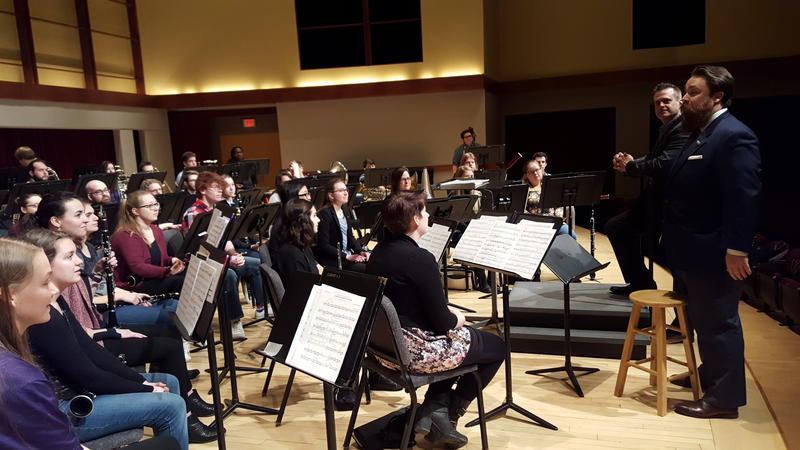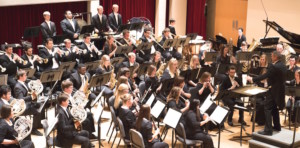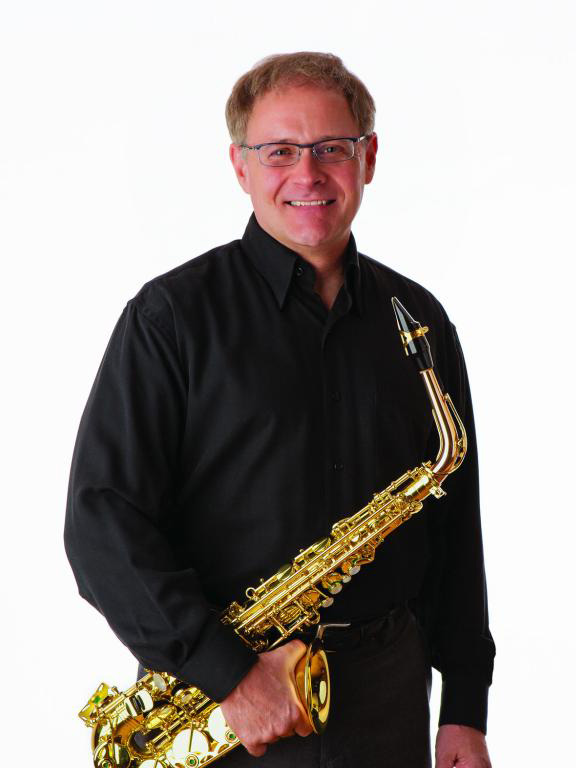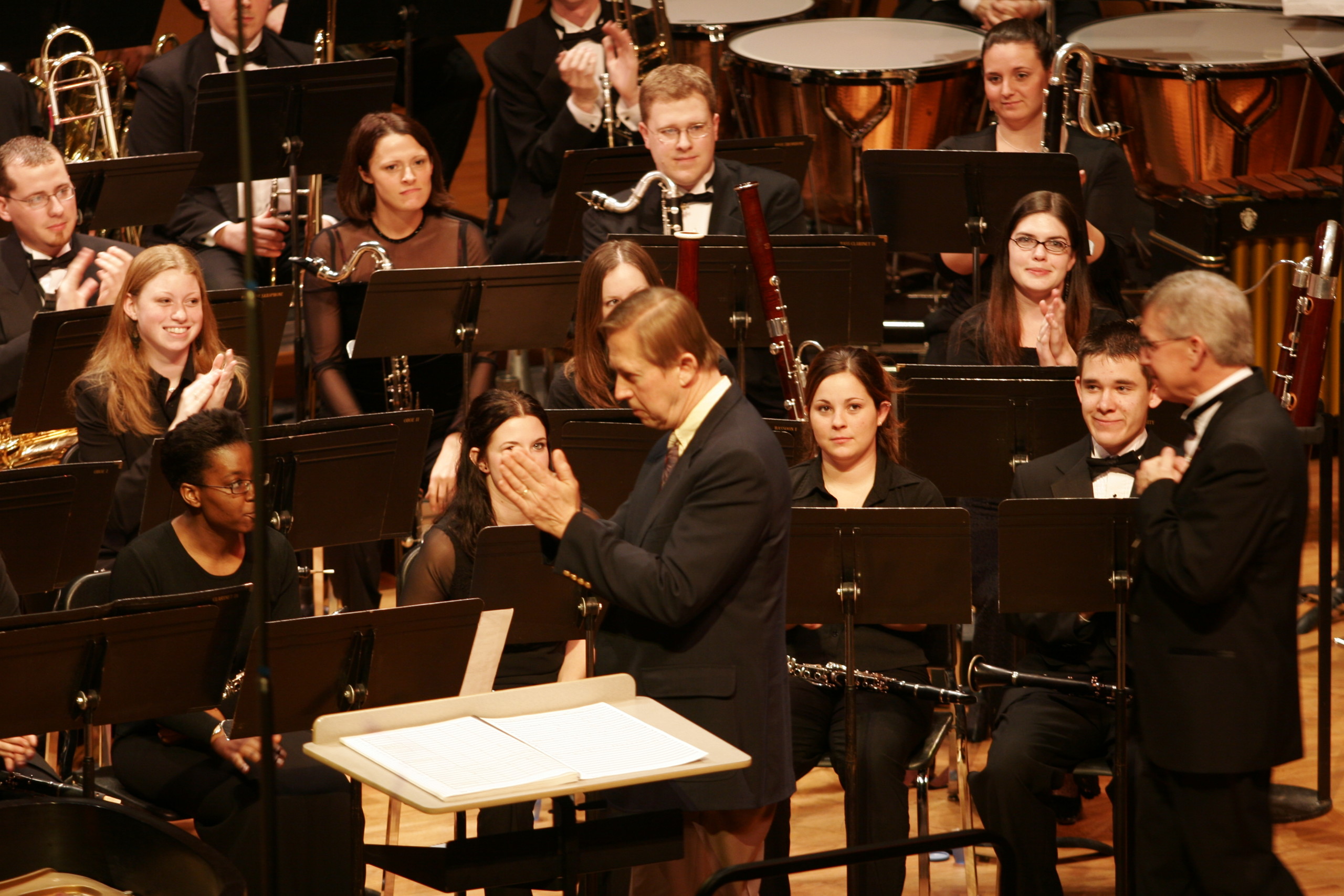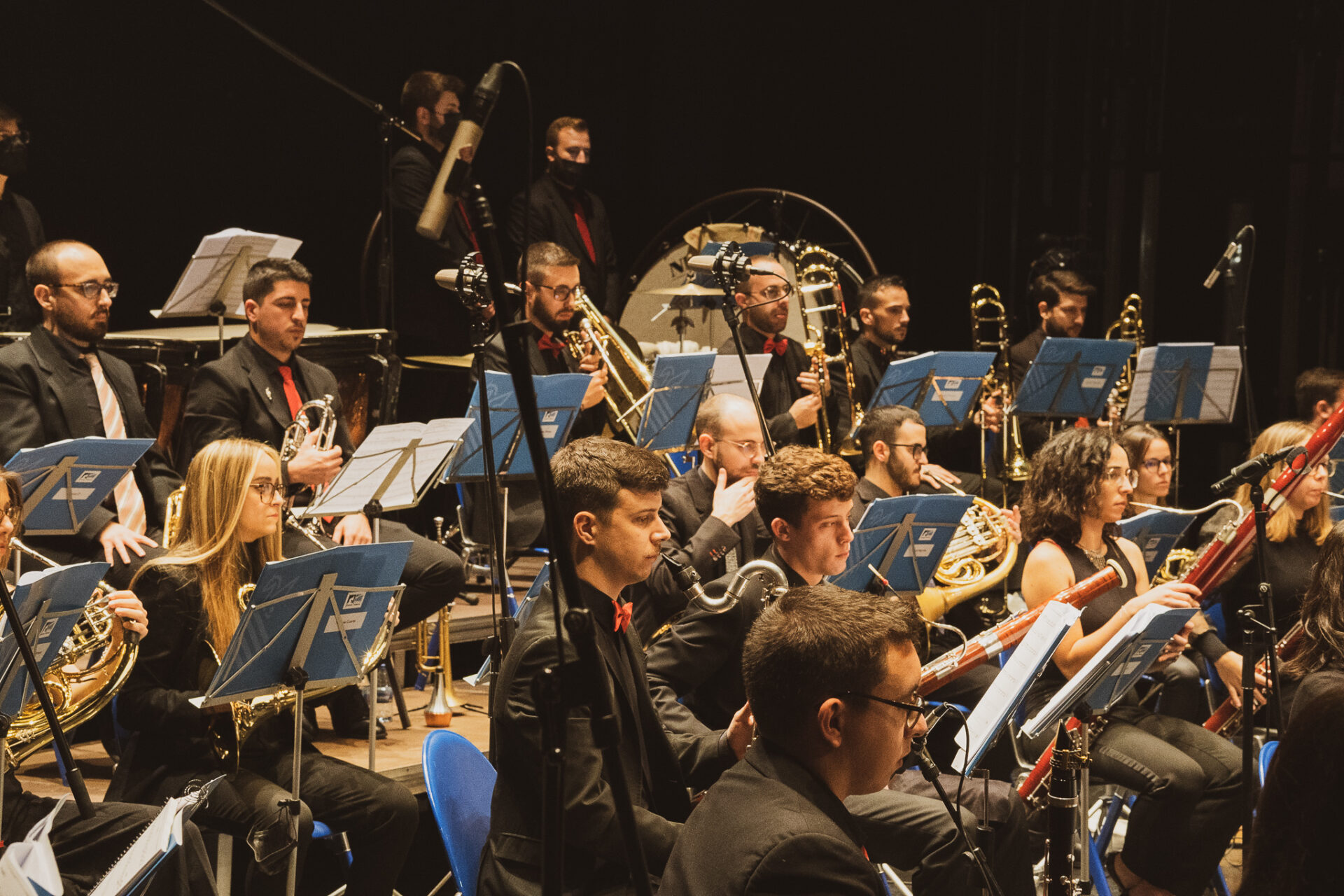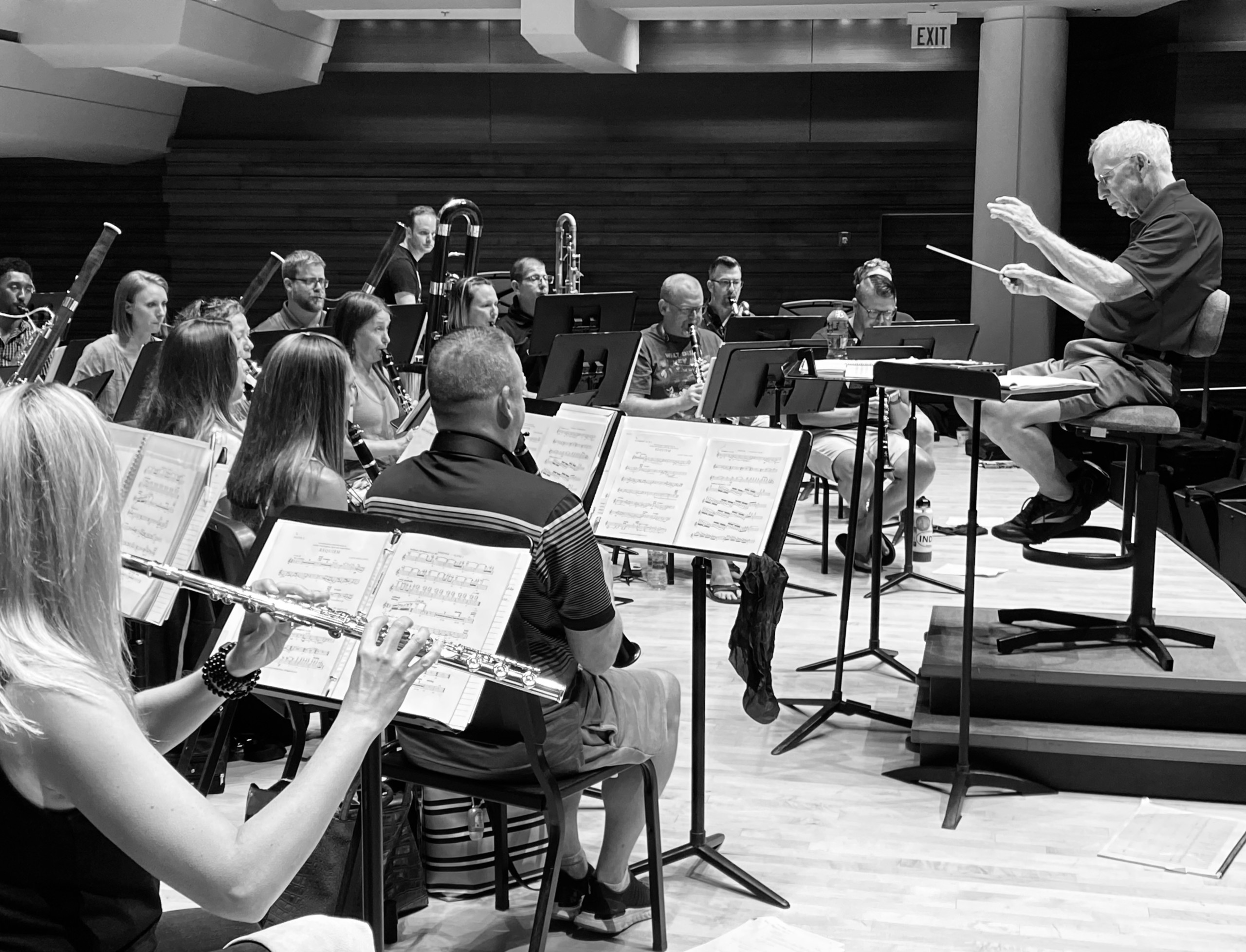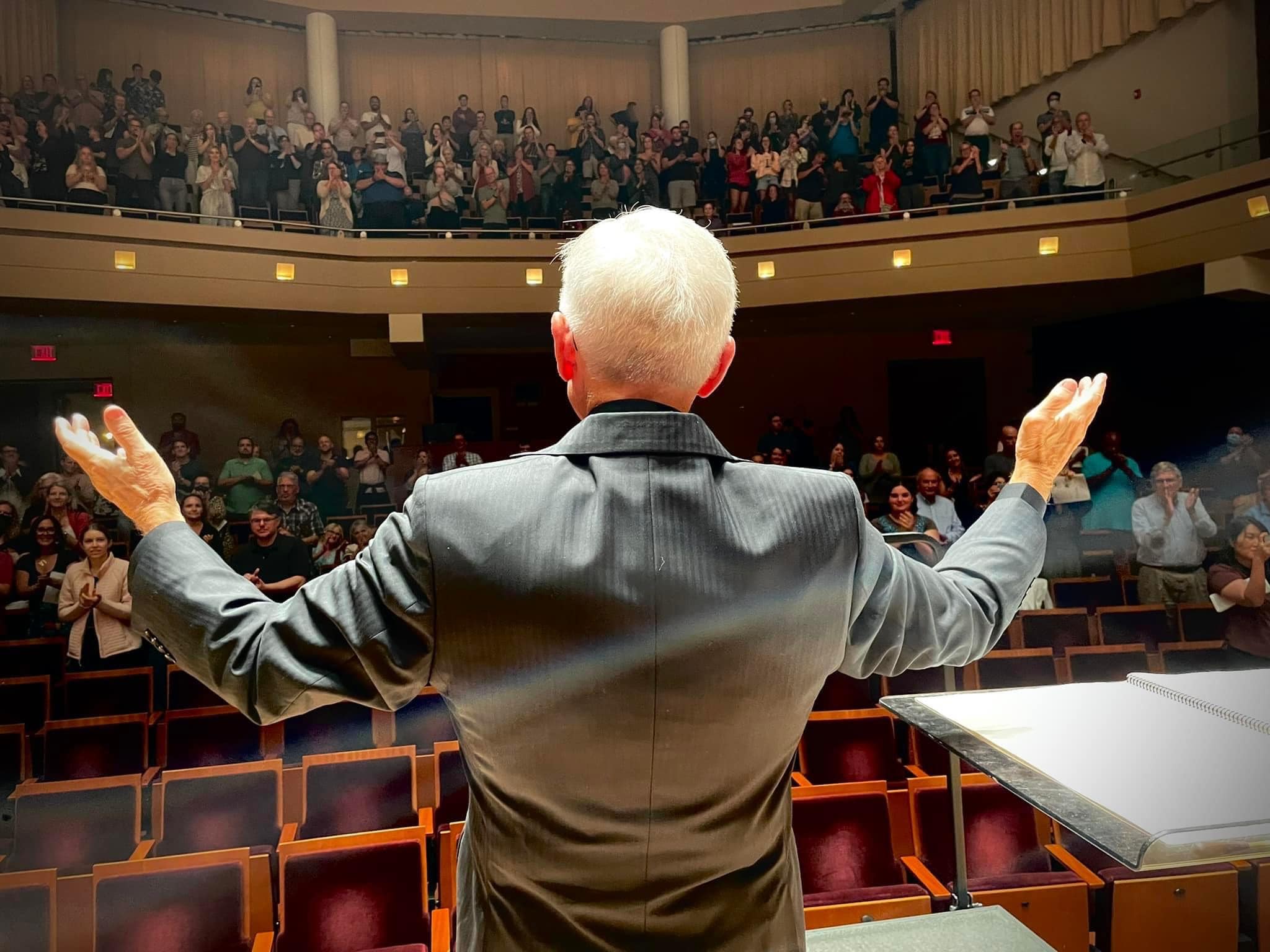Maslanka Weekly highlights excellent performances of David Maslanka’s music from around the web.
Matthew Maslanka is the foremost authority on the music of David Maslanka. Having his father’s music in his mind, body, and heart, Matthew is committed to preserving the legacy of his father. Apart from owning & managing Maslanka Press and presiding over The Maslanka Foundation, Matthew has taken up where his father left off: visiting schools and performers to work with ensembles on David’s music. While Matthew is equally at home coaching ensembles of all levels in the full canon of David’s music, much of his time has been spent recently with Symphony No. 10. This week, we feature several performances of Symphony No. 10 that came as the result of Matthew being in residency with various ensembles and their conductors.
Symphony No. 10: The River of Time
From Matthew Maslanka’s original program note:
Symphony No. 10 was commissioned by a consortium headed by Stephen K. Steele, Scott Hagen (University of Utah), and Onsby Rose (The Ohio State University). My father passed away while writing the work. I completed the composition based on his sketches.
Dad wrote about the origins of the symphony:
The work began as always with meditation: “show me something I need to know about the piece I am going to write.” Here is the first image that came:
The Holy Mother takes me sliding down a rocky mountain slope, all loose small rocks. It’s a wild stony country, very little vegetation, many beautiful colors in large rock formations, brilliant sun. We find a large pool nestled among tall vertical rock faces. The water is turquoise blue. We go into the pool and swim/flow downward, rising again toward a circle of light. At the surface is a “divine” place of craggy multicolored rock faces. A voice speaks my name and says, “you are ready, receive what wants to come through…We are here. You go and do.”
And the second from a few days later:
I am met by the Holy Mother in the guise of an 18-year-old Swiss farm girl – blond, pretty, traditional dress. I am shown various views of the earth and the oceans. The earth is clean, the oceans are clean. Humans have come into balance with the earth and are happy. The farm girl shows me a farm full of milk cows. The world is still technological but we are living an agrarian life, I am shown a large beautiful auditorium where music is being made. The girl thanks me for what I have done to make this new world possible. This is an odd thought for me to accept.
Then came the usual problem of composing. “I” desired to write an important piece. In my vague imagination it was like one of the big symphonies of Dimitri Shostakovich, my favorite modern symphonist. But my inner compass kept dragging me away from that, and pulling back to the humble world of the chorales. A pattern began to emerge of a chorale and a response, the response being the evolution of a radically simple, intimate, and beautiful melody. This process kept repeating itself until half a dozen of these melodic pairings began to emerge – all simple, beautiful, personal, not “important”. At each step I continually questioned whether this was the symphony that needed to be: “Really? Seriously? This is what you want me to do?” – yes. Finding the structural line for the whole piece was extremely difficult. At a certain point, I sensed that a large movement wanted to happen, but it existed only as a hard little node that had begun to rise to consciousness.
At the time of his death, my father had fully completed the first movement and half of the second. The remainder of the second movement and the whole of the fourth movement were sketched out. The third movement (“the hard node”) had an opening sketched, but the rest was in fragments. Dad asked me to finish the work if he were unable to complete it. I drew on my long experience working with dad and his music to first understand the sketches and then to piece them together.
Dad titled the completed first movement after his wife and my mother: “Alison.” He was writing as my mother was dying of an immune disorder in the spring of 2017. This movement may be seen through that lens, with bitter rage at the coming loss and a beautiful song full of love.
I have named the subsequent movements. The second movement’s title, “Mother and Boy Watching the River of Time,” comes from my father’s final pencil sketch of the same name. It depicts two small figures sitting on a river bank in front of a forest and mountain foothills. The music is largely a transcription of the second movement of the euphonium sonata he wrote for me, Song Lines.
The third movement posed a special challenge. The movement was both at the emotional center of the symphony and the least finished. One tune, marked “The Song at the Heart of it All” in the sketch, became the heart of the work and of the symphony. The full statement of the theme may be found at bar 174, with a quiet restatement in the solo euphonium at bar 217. It is a pure expression of love: my love for my father, his love for me, my mother, sister, and brother, and by extension, love for humanity. The restatement of the opening material, though at first comforting, becomes jarring and unsettled, rising to a dissonant roar. The euphonium soloist is left to scream, “why?!” at world that seems content to keep spinning.
The third movement became my response to the deaths of my mother and father. It is not what dad would have written; rather, it is a synthesis of his mind and his, colored by extraordinary pain and loss. I have named the movement after my father.
The fourth movement, “One Breath in Peace,” is the acceptance and ability to move forward after loss. The long solo lines for oboe reflect and extend the bookending chorale, “Jesu, der du meine Seele”. Dad’s customary morning practice was to play one chorale from the Bach 371 Chorales. He would sing each line as he played along on the piano. In this way, he came to deeply understand these miniature jewels of western music. I have closed the symphony with the last statement of the chorale, with the pianist singing the tenor line. I hope you will hear his voice in it.
Watch below as Onsby Rose leads The Ohio State University Wind Symphony in a performance from February 7, 2019.
More info
Watch below as Scott Hagen leads the University of Utah Wind Ensemble in the premiere performance from April 3, 2018.
More info
Watch below and proceed to 21:00 as Mike Fansler leads the Western Illinois University Wind Ensemble in a performance from February 23, 2019.
More info
For more information on Symphony No. 10, please visit Symphony No. 10 @ davidmaslanka.com
To contact Matthew Maslanka for clinics, lectures, or questions, click here.
We would love to hear from you! If you know of any outstanding performances of David Maslanka’s music on the web, please email us at maslankaweekly@maslanka.org.
